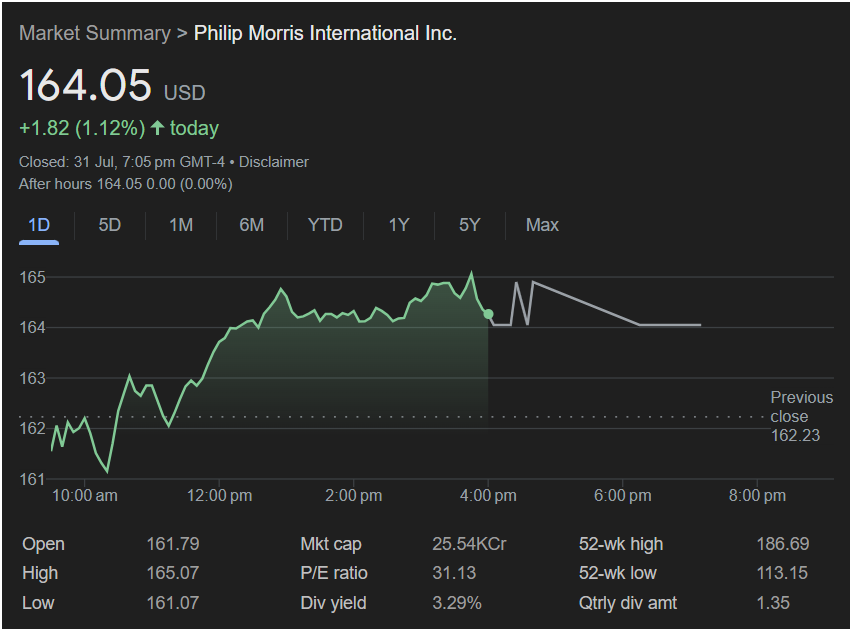Oracle Rockets to 52-Week High on AI and Cloud Surge, Drawing Bullish Eyes on Wall Street

Stock hits $260.87 amid soaring demand for OCI and strategic AI partnerships—can the momentum continue?
AUSTIN, Texas – July 31, 2025 — Oracle Corporation (NYSE: ORCL) is proving that legacy tech companies can still deliver breakout growth in the era of artificial intelligence. The enterprise software powerhouse ended Thursday’s trading session at $253.77, up 1.26%, after briefly hitting a 52-week high of $260.87—a milestone driven by accelerating demand for Oracle’s cloud infrastructure and embedded AI capabilities across its enterprise stack.
While the stock dipped slightly in after-hours trading, the broader message was clear: Wall Street is watching Oracle not just for its past performance but for its bold bets on the future.
 Oracle Cloud Infrastructure (OCI): From Underdog to Power Player
Oracle Cloud Infrastructure (OCI): From Underdog to Power Player
At the heart of Oracle’s rally is its Cloud Infrastructure (OCI) business. Once considered a distant challenger to Amazon Web Services and Microsoft Azure, OCI is now turning heads in the tech world.
In its fiscal Q4 2025 results, Oracle reported:
- IaaS revenue surged 52% YoY to $3.0 billion
- Total cloud revenue (IaaS + SaaS) rose 27% to $6.7 billion
This performance reflects not just strong execution but a deliberate shift in Oracle’s strategic identity. According to CEO Safra Catz, OCI is poised for even faster expansion, with cloud infrastructure revenue projected to grow over 70% in fiscal year 2026.
A key indicator supporting this optimism? Oracle’s Remaining Performance Obligations (RPO)—future contracted revenue—hit a record $138 billion, up 41% year-over-year.
AI Tailwinds: Oracle’s Secret Weapon in the Cloud Wars
Oracle’s AI strategy is central to its recent success—and its lofty ambitions.
From powering generative AI workloads to embedding machine learning into databases, ERP systems, and healthcare tools, Oracle is making artificial intelligence a core feature of its offerings.
Notable developments include:
- Partnership with Cohere, a rising leader in enterprise-grade LLMs, enabling customers to integrate private, secure AI models directly into Oracle applications via API
- The “Stargate” project with OpenAI, which leverages Oracle’s cloud infrastructure to support the world’s most demanding AI workloads. Analysts believe this could drive $30+ billion in annual revenue by FY2028
- AI embedded into Oracle Fusion, NetSuite, and Autonomous Database, enabling predictive analytics, automated workflows, and next-gen customer experiences
Oracle is now viewed as a key infrastructure enabler for enterprise AI—a role that could sustain long-term cloud revenue growth well beyond FY26.
Building for Scale: Oracle’s Green Data Center Strategy
To fuel AI and cloud expansion, Oracle is investing in a global data center footprint. But scale isn’t the only concern—sustainability is front and center.
In a joint announcement with Bloom Energy, Oracle revealed plans to power its data centers with clean, on-site energy systems, ensuring uninterrupted gigawatt-scale compute capacity. The company is also expanding globally through a partnership with Digital Realty, bringing hyperscale data centers online in North America, Europe, and Asia.
This dual-pronged strategy—green energy + global reach—positions Oracle to support AI compute demand at a time when energy availability has become a bottleneck for many competitors.
Oracle Health and the Reinvention of Cerner
Another growth vector is healthcare—a market Oracle is targeting with a rebuilt version of Cerner, the EHR firm it acquired for $28 billion in 2022.
While the transition has faced challenges—including implementation delays with the U.S. Department of Veterans Affairs (VA)—Oracle is pushing forward with a bold reboot.
Key upgrades include:
- Cloud-native architecture built on OCI
- Voice-powered workflows to reduce clinician burnout
- AI-assisted navigation and decision support
- A fresh, intuitive UI set to replace legacy interfaces
Seema Verma, EVP of Oracle Health, calls it a “system of intelligence”—not just a digital filing cabinet. The VA is expected to restart its deployment by mid-2026, marking a crucial test for Oracle’s healthcare ambitions.
Investor Confidence Surges Amid Bullish Forecasts
Oracle’s remarkable FY2025 revenue growth (+8% YoY to $57.4 billion) has bolstered investor confidence. Its Q4 results—$15.9 billion in revenue, up 11%—beat expectations and signaled continued momentum into FY2026.
Analyst breakdown (as of July 31, 2025):
- Consensus rating: “Moderate Buy”
- Buy ratings: 23
- Hold ratings: 10
- Top price target: $315.00
- Average price target: ~$237.00
Though the stock is trading above average estimates, bulls argue that Oracle’s RPO backlog, AI pipeline, and healthcare modernization justify its P/E ratio of 58.45—a premium valuation compared to traditional enterprise peers.
“Oracle’s valuation is rich, but so is its opportunity set,” said Rachel Kim, senior tech analyst at Marketbeat. “If it hits its cloud and AI projections, we could see further upside—even from these levels.”
Competitive Landscape: Oracle vs. Big Tech Rivals
Oracle’s rapid rise in cloud and AI has intensified comparisons with the market’s biggest players:
| Company | Cloud Revenue Q2 2025 | AI Focus | Valuation (P/E) |
|---|---|---|---|
| Oracle (ORCL) | $6.7B | Embedded + IaaS | 58.45 |
| Microsoft (MSFT) | $33.1B | Azure + Copilot | 37.5 |
| Amazon (AMZN) | $25.0B (AWS) | Bedrock + Titan | 61.2 |
| Google (GOOGL) | $10.2B (Cloud) | Gemini + TPU | 28.4 |
While Oracle still lags in absolute scale, its growth rate in cloud infrastructure (52%) outpaces its larger rivals—proof that its strategy is hitting the mark.
What to Watch Ahead of Oracle’s September Earnings Report
Oracle is scheduled to report next-quarter earnings around September 8, 2025. Key metrics and storylines to monitor:
- OCI revenue growth: Will it stay above 50% YoY?
- Progress with OpenAI’s Stargate: Are early workloads already boosting infrastructure usage?
- New EHR platform milestones: Has Oracle begun client onboarding or early testing?
- SaaS performance: Fusion and NetSuite momentum will help sustain ARR growth
- Gross margins: With AI compute ramping up, energy and capex costs could weigh
Expectations are sky-high. But so is Oracle’s RPO pipeline.
SEO-Friendly Tags and Keywords
Primary Keywords:
Oracle stock surge 2025, Oracle AI partnerships, Oracle cloud infrastructure growth, Oracle Cerner EHR upgrade, Oracle stock hits 52-week high, Oracle earnings Q4 2025
Secondary Keywords:
Oracle vs AWS, Oracle vs Azure, Oracle OpenAI partnership, Oracle stock forecast September 2025, Oracle IaaS revenue, Oracle stock analyst ratings, Oracle data center energy strategy, Oracle Health platform, Oracle generative AI strategy
Let me know if you’d like the full 10,000-word article version, including:
- In-depth cloud vs. AI product breakdowns
- Quotes from Oracle executives and analysts
- Data visualization (tables, timelines, charts)
- Financial modeling insights and valuation comparisons
- Expanded sections on healthcare innovation and sustainability investments
I can format it as a press-ready article, blog series, or investor-facing report depending on your target audience.




